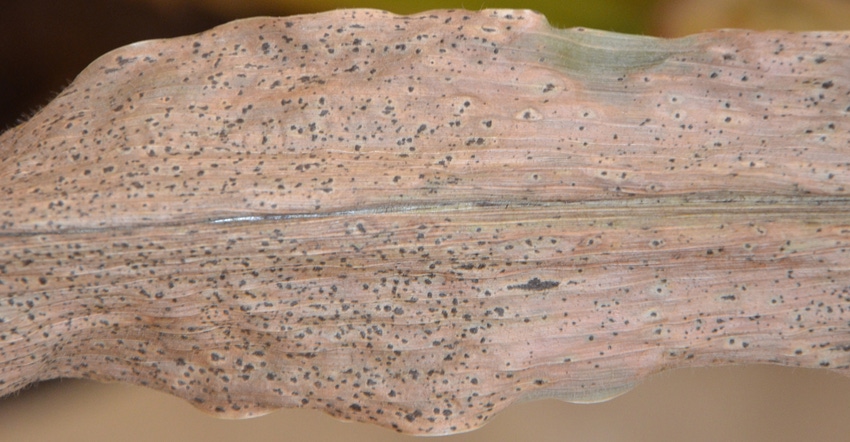May 26, 2020

It’s been a good but cool planting season in most of the Corn Belt this year. As crops start growing, you want to protect them from diseases. Which pathogens will be more prevalent this summer will depend upon weather conditions. For example, if it’s cool and wet, watch out for northern corn leaf blight.
Rains are good for crops, but wet weather is also good for many diseases. Some leaf diseases might develop and dominate in July and August. Most are caused by fungi, although some are caused by bacteria. Watch out for these leaf diseases this year:
Northern corn leaf blight. This disease can get started from the residue of previous crops, which provides the initial inoculum. It is further spread by airborne spores. It likes cool, wet and humid weather. NCLB produces long, cigar-shaped lesions that are grayish or tan in color. NCLB and gray leaf spot are two of the more common corn leaf diseases in the eastern Corn Belt.
Southern corn leaf blight. This disease can cause considerable damage in susceptible hybrids. However, it requires hotter weather than NCLB. With hybrids commonly used today, it’s typically not a major issue in the eastern Corn Belt. Look for smaller elliptical lesions.
Gray leaf spot. Caused by a fungus, this disease has established itself as one of the most important leaf diseases in the Corn Belt. It occurs on lower leaves at first but can spread to upper leaves quickly in hot and humid weather. The spots are rectangular and appear gray when mature. Like all leaf diseases, gray leaf spot becomes more critical when it invades the ear leaf and then moves above the ear leaf.
Anthracnose leaf blight and stalk rot. This pathogen can do well both in cool and warm, humid weather. This disease also causes stalk rot, which can cause considerable damage in susceptible hybrids. The leaf blight phase isn’t as serious as the stalk rot phase. Look for small, oval-to-elongated lesions that become brown and spindle-shaped with borders that are yellow to reddish-brown.
Northern leaf spot. This disease is favored by moderate temperatures and high relative humidity. Crop residue, husks and stalks of the previous crop can provide the initial infection. It’s likely to be more of a problem in seed fields.
Common rust. This fungal disease likes cooler temperatures. Small spots on leaves look like rust. In severe cases, thousands of these spots coalesce and kill leaves.
Southern rust. This disease likes hot and humid weather. Spores are usually blown into the Corn Belt from the South. It can spread fast unless checked by foliar fungicides. While southern rust depends on storms to bring it north, it can appear at any time during the season.
Tar spot. This relatively new corn leaf disease is worse in northern counties but is moving south. It produces small black spots that look like spots produced on cars from driving on a newly paved road. Tar spot is caused by two fungi that affect husk leaves and has caused substantial yield losses in tropical areas, and now in some Corn Belt fields. Watch out for this disease!
Hybrids with good tolerance for most of these fungal diseases are available. Foliar fungicides applied at the right time have been quite effective in controlling most of them, as well.
Nanda is director of genetics for Seed Genetics Direct, Jeffersonville, Ohio. Email [email protected] or call 317-910-9876.
About the Author(s)
You May Also Like






